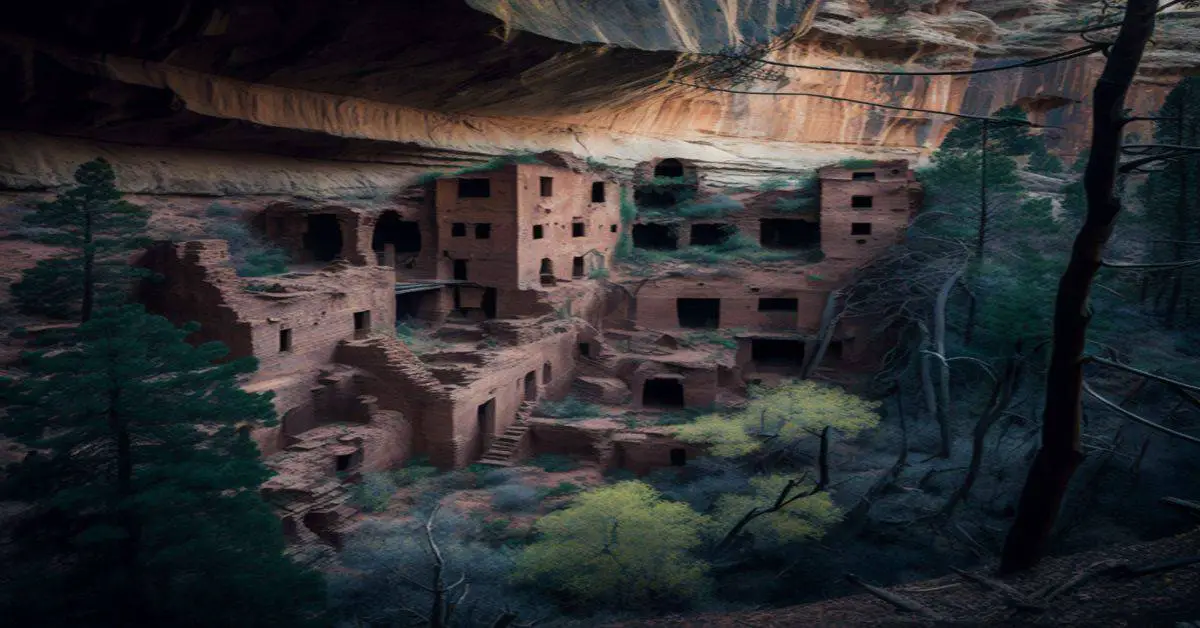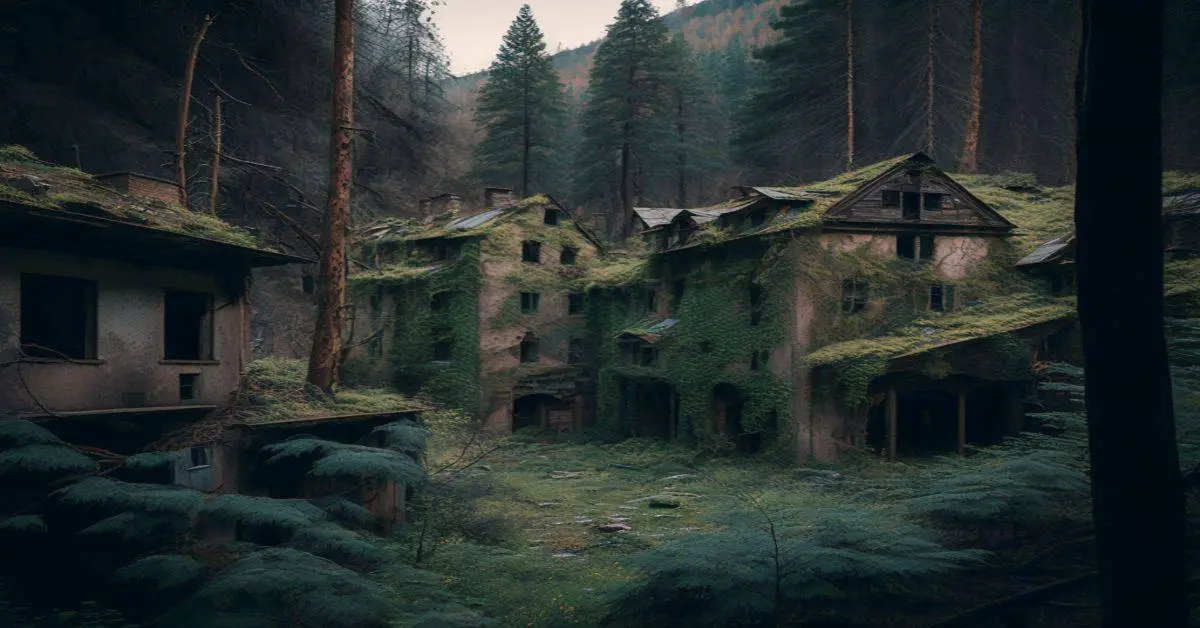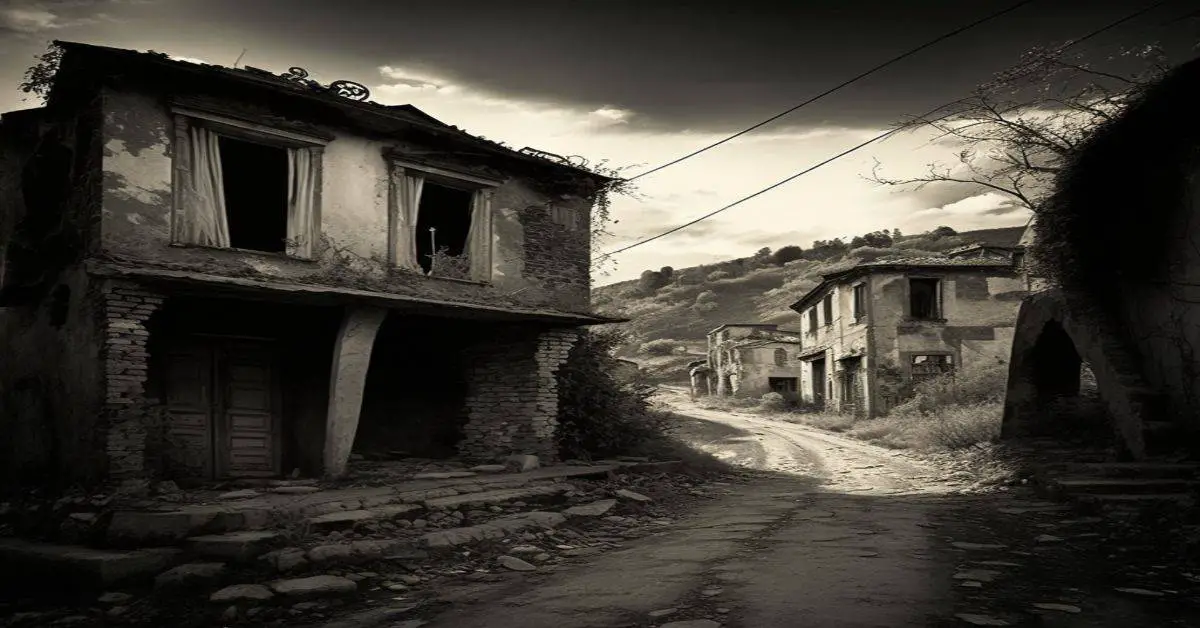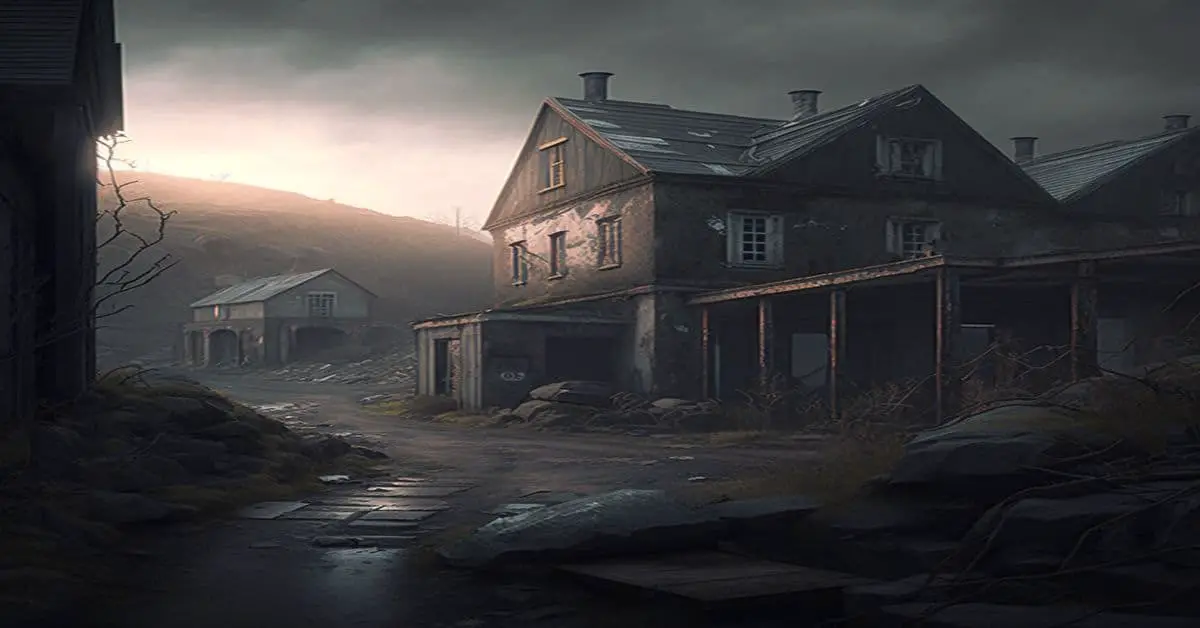Gold was discovered in California in 1848 near Sutter Creek. Thousands of prospectors rushed into the region, hoping to strike it rich. Many ended up leaving empty-handed, but those who stayed put built thriving communities around the discoveries. Many old ghost towns are preserved as museums and tourist attractions.
Nevada City, Montana
Just over 2.5 km from Virginia City, NV, another gold rush town turned museum exists. Bought by the Bovey Family, who restored and preserved original buildings and their interiors between 1945 and 1978, the town is now a living museum.
With its rich history, Virginia City has become a destination for visitors interested in learning about Nevada’s past. Today, tourists flock here to see the restored buildings and learn about life during the boom times of 1859–1880.
Are you traveling through the wild west today? Today, trains connect both towns while live re-enactments every weekend offer a glimpse into life in the Wild West in the 1800s.
Virginia City, Montana
Gold mining began here in 1859 near present-day Coto de Caza, California. It grew into a boomtown during the late 19th Century but eventually lost its luster after discovering richer veins elsewhere. Today, visitors flock to see the remains of buildings built during the heyday of the mines.
When the townsfolk heard about the gold strike, they came rushing into town hoping to stake claim to the new riches, but instead, they ended up being robbed and murdered at gunpoint by bandits called “road agents.” These men would rob unsuspecting travelers along the dusty roads leading westward and kill those who resisted.
Charles and Sue Bovey purchased the town four decades ago to rebuild and preserve its original structures. Today, Virginia City is open for visitors with some precautions due to coronavirus concerns.
Nelson, Nevada
Nelson is located just off Interstate 15, approximately 30 minutes southwest of Las Vegas. Abandoned since 1938, the ghostly remnants of this once thriving community still stand today. Once a rough frontier outpost, the town was founded around 1864 and named after Nevada Territorial Governor John C. Frémont.
Over time, however, the town fell victim to violence and crime. By 1888, there were only 25 permanent residents left in Nelson. Today, visitors flock here to see the remains of old buildings, including homes, saloons, churches, schools, and businesses.
Werlixville, located near Carson City, NV, has been preserved since its abandonment during World War II. Now owned by the Werley Family Foundation, the community features over 500 historic buildings, including homes, hotels, saloons, churches, schools, businesses, and many old mine shafts.
This historic town has been preserved thanks to the hard work of volunteers over the decades. Visitors can tour the old schoolhouse, see the original jail cell, and explore the mines. No selfie stick allowed.
Animas Forks, Colorado
In 1872, miners discovered gold at the present-day Gold Campsite near the San Miguel River and Animas Creek confluence. By 1880, over 300 men were employed mining the ore. However, after only six years, the boom ended. Most of these workers left town, leaving behind just a few families. The ghostly remains of old buildings still stand along Main Street, but no trace of the once-thriving settlement exists today.
Colorado has been called “the Switzerland of America” due to its diverse geography and climate. However, over 200 years ago, the state suffered a severe winter storm that wiped out the mining industry. Nowadays, tourists can visit the ghostly remains of old mining towns like Leadville, which were once bustling centers of commerce but now lie buried beneath several feet of ice.
Animas Forks was founded in 1879 after gold was discovered nearby. Many miners moved there hoping to strike it rich. However, they soon realized that mining wasn’t profitable enough to sustain themselves, and many left. Today only four original structures remain standing. They’re now open to tourists.
Bodie, California
Bodie was once a thriving community with over ten thousand residents at its peak during the 1860s. However, after discovering nearby placer deposits in 1859, many miners left the region, looking for richer ore elsewhere. By 1870, only around 300 remained. Today, a few buildings remain standing, including the old jailhouse, church, schoolhouse, and cemetery. There are no longer any active mines in operation here either.
In 1872, the first mine opened at Cripple Creek, Colorado, and within ten years, over 2 million tons of gold were extracted annually. By 1900, production had reached its peak of $1 billion per year. However, due to high costs, low prices, and increasing competition from foreign sources, mining operations began closing down throughout the 20th Century. Today only around 6,500 ounces of gold are produced each year.
Bodie was once a thriving gold mining community, but today only ruins remain. Most buildings were destroyed during the 1906 earthquake and fire. Today, Bodie State Historical Park preserves many of these historic structures. Visitors can tour the park grounds and visit several restored homes like the Church House Museum, which has exhibits related to the Gold Rush era.
Bannack, Montana
Bannack, Montana, was once a thriving city after a significant gold discovery drew in prospectors in the early 1860s. It even served as the capital of the Montana Territories for a short while. Home to over 10,000 inhabitants, it had three hotels, three bakeries, two meat shops, and a grocery store, so despite its extreme isolation, it was well served. It survived as a small mining community for almost a hundred years, when the last residents moved away, and Bannack became a ghost town.
Bannack has become a tourist attraction since its founding in 1859. Over sixty structures remain, including several hotels, restaurants, saloons, and homes. One of these houses is the Hotel Meade, built-in 1860. Many prospectors stayed here overnight during the height of gold mining activity before heading off into the mountains. Their stories were told through the hotel owner, William H. Meade, whose wife served meals to guests until he died in 1898.
Bannack was once called “the last frontier” due to its remoteness. Today, Bannack has become a ghost town, but they remain plenty to see and do. Many believe spirits roam through the old buildings, including the historic hotel, and they often hear strange noises at night.
St Elmo, Colorado
St. Elmo sits at 9,906 ft (2,895 m), just north of Crested Butte Mountain Resort. Originally called Forrest City, St. Elmo once boasted a telegraph office, a post office, five hotels, several saloons and dance halls, a newspaper office, and a schoolhouse, but by 1922 the biggest mine had shut down, and the town was all but deserted.
St. Elmo has no permanent population, but its history attracts visitors yearly. There was once a thriving gold rush community here; however, the last resident left in 1956. Today, only a few locals remain. Visitors enjoy the historical sites and unique architecture.
St. Elmo was once a thriving gold town until its mines were closed during the Great Depression. Today, the remains of these abandoned structures provide hikers and mountain bikers alike with breathtaking views of the surrounding peaks and valleys.
Pearce, Arizona
In 1892, Cornish miner James Pearce was prospecting near present-day Goldfield, Nevada, when he stumbled upon a rich ore vein. He returned to England to tell his family about the discovery, but they weren’t interested. So he decided to build himself a new life in America instead.
After settling down in Phoenix, Pearce founded the city of Goldfield. His hometown eventually grew into a bustling mining community with over 2,500 residents at its peak. However, the mines never produced enough money to sustain the population, and the town slowly faded away until today; only ruins remain.
This former mining town has been preserved as a historic site thanks to its unique architecture and rich history. Its buildings include the original schoolhouse, church, post office, general store, hotel, and saloon. Many of these structures were built during the late 1800s and early 1900s. They now serve as museums and provide visitors with an insight into life in the past.
One of Mexico’s top tourist destinations, Teotihuacán, was once a major city inhabited over 2,000 years ago. Today, visitors flock to its pyramids, temples, palaces, and ancient art. Located just 30 miles south of Mexico City, it’s accessible via public transportation.
Virginia City, Nevada
In 1849, Virginia City was founded near present-day Carson City, NV. Its population grew rapidly due to gold mining operations. By 1870, however, the town’s economy began to decline because of low ore prices. After 1879, the mine closed down completely. Today, only a few buildings remain standing from the original settlement.
Samuel Langhorne Clemens wrote much of Huckleberry Finn in Virginia City, Nevada. He moved there after leaving Missouri in 1853 to work as a reporter for the Territorial Enterprise newspaper. While working at the paper, he adopted the pseudonym “Mark Twain” and began writing stories that would later become famous works like Tom Sawyer and Adventures of Huckleberry Finn.
Virginia City was founded during the California gold rush of 1849. At the time, Virginia City had over 10,000 inhabitants, but today there are only around 200 permanent residents. Most of these folks live in Victorian-era houses built at the turn of the 20th Century. These homes are filled with antiques and old furniture. There are plenty of places to stay here, including B&Bs, bed & breakfasts, hostels, motels, and hotels.
Calico, California
Calico was founded in 1848 near present-day San Francisco Bay. At its peak, there were around 5,000 residents living here, including miners, farmers, ranchers, merchants, and loggers. That changed dramatically after the federal government passed legislation regulating prices for silver in 1896. Suddenly, many businesses went bankrupt, and thousands lost their jobs.
Calico is located south of Leadville at the confluence of the South Platte River and Clear Creek. Originally named after the Colorado mining company that operated there, Calico grew slowly until the late 19th Century. Today, visitors can take guided walking tours through the old buildings, visit the local museum, ride the steam locomotive and enjoy live entertainment throughout the year.
Calico is the quintessential Wild West mining town, and it’s easy to imagine gunslingers and sheriffs making their way into the town’s taverns and shops. Usually, it’s a popular destination with tourists in Southern California, particularly around Halloween when Calico hosts its annual Ghost Haunt.
Ruby, Arizona
Ruby was once the largest copper mine in North America. Now, only ruins remain of its former glory. Surrounded by the Coronado National Forest in southern Arizona, these abandoned mines provide a haunting backdrop for hikers and photographers alike.
In 1866, a man named William Morgan discovered ruby deposits near modern-day Sri Lanka. He brought samples back to England, but they were too dark to sell until he met Thomas Clapperton, a British explorer looking for new sources of trade goods. Together, they formed De Beers Consolidated Mines Limited, later renamed DeBeers Diamond Corporation. They began selling diamonds made from these stones; the rest is history.
The mining towns were once bustling communities filled with shops and schools. Today, they’re ghostly reminders of the hard work done by those who came before us.
Kennecott, Alaska
In 1883, prospectors discovered rich deposits of copper ore at Kennecott Lake near the Copper River in Southeast Alaska. They named the mine after its location, “Keneytson,” meaning “the place of copper.” Today, Kennecott remains one of North America’s largest open-pit mines.
By 1908, they had become the largest producer of copper in North America. Between 1909 and 1938, Kennecott mined over four million tons of ore containing $1.2 billion in copper. However, after the mine closed in 1939, it remained inactive until 1984, when the site opened to public tours.
As the mine was abandoned, many buildings were left behind. There are several ways to explore these ruins, including hiking trails, organized tours, and self-guided exploration.
South Pass City, Wyoming
Thousands of prospectors flocked to this lonely spot in central Wyoming, drawn by the promise of gold and riches. From 1868 to 1869, South Pass City was booming with activity. Still, the harsh winter weather of the South Pass and the grueling labor involved in extracting meager amounts of gold meant the population dwindled just as rapidly as it had grown.
South Pass City has been restored to its former glory thanks to volunteers and preservationists working together over many years. Today, it’s a well-preserved ghost town off Highway 89 near the Nevada border.
There are tours available year-round, but they fill quickly. During the peak tourist months of July through September, there are several events, including gold panning demonstrations, historical re-enactment days, and living history weekends.
South Pass City has many historical sites, including the original Pony Express station, the only remaining building left after the devastating fire of 1879. There are several ghost towns nearby where gold was once mined. They’re now filled with ruins and abandoned homes.
Rhyolite, Nevada
Rhyolite, located just over 120 miles north of Las Vegas, has been called “Nevada’s Best Known Ghost Town” since its heyday during the late 19th Century. During those years, many hopeful settlers flocked here, hoping to strike it rich by panning for the precious metal.
In 1907, Rhyolite had electricity, running water, a stock market, and a population of almost 8,500 residents. However, several unfortunate events caused its demise: the 1906 San Francisco Earthquake and a financial crisis later that same year made mining prohibitively expensive.
By the end of 1910, the mine was operating at a loss, and it shut down in 1911. Rhyolite was completely abandoned only nine years later.
This abandoned mining town was once a bustling community until the gold ran low, and miners moved on. Today, ruins remain scattered throughout the landscape, including a general store, church, schoolhouse, and hotel. Visitors can explore many of these structures, but only through guided tours. Most visitors arrive at nightfall; however, no lights are inside any buildings, so bring flashlights.
Coloma, California
Coloma is 4200 feet above sea level near Lake Tahoe in Northern California. During the Gold Rush era, prospectors discovered rich veins of gold here. Today, visitors enjoy hiking around the town, visiting its museums and historic sites, and taking advantage of its many recreational opportunities, including skiing, fishing, golfing, horseback riding, mountain biking, kayaking, rafting, and whitewater boating.
Coloma was once a thriving city, but today only ruins remain. The mill at the center of town was built by John Augustus Sutter, whose family had been living here since 1776. They were pioneers of California, having arrived before any Europeans did.
He brought his wife along and lived together until he died in 1850. She remained behind in San Francisco, never returning to live near her husband again. Today visitors can see the remains of the original building, including its stone walls and wooden beams. There’s no guarantee that gold is still present, though many believe it could be worth millions.
Coloma was once a bustling town during the Gold Rush days, but now much of its history lies forgotten. Today visitors can explore the remains of many old buildings and learn about life during the period. There is also a museum featuring exhibits related to the early mining era. Visitors can try their hand at panning for gold along the banks of the Tuolumne River.



